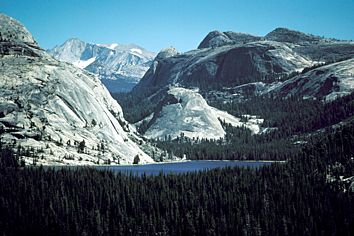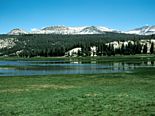Sierra Nevada of California (USA)
Named by the Spanish after their Mediterreanean "snowy ranges" in Spain the Sierra Nevada of
California is impressive because of its 4000 m elevation, granitic escarpments (most
famous in Yosemite National Park), and high moisture availability in an otherwise dry,
mediterranean environment. In sight of the hottest place on earth, the Death Valley, we find
all types of alpine vegetation.
1 -
A sharp transition from
montane
coniferous forest to barren granit is characteristic for the central Sierras near Tioga Pass.
4 - Tuolumne meadows (2900 m).

7 - Treeline near Tioga Pass (3050 m).
7 - Treeline near Tioga Pass (3050 m).
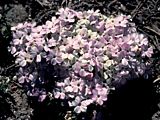
8 -
Phlox diffusa
(Polemoniaceae)
8 -
Phlox diffusa
(Polemoniaceae)

9 -
Phyllodoce beveri
(Ericaceae), "red heather".
9 -
Phyllodoce beveri
(Ericaceae), "red heather".

10 -
Cassiope sp.
(Ericaceae), near Saddleback Lake.
10 -
Cassiope sp.
(Ericaceae), near Saddleback Lake.
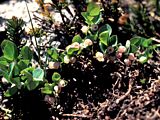
11 -
Vaccinium nivictum
(Ericaceae), near Harvey M. Hall natural area, a classical site for ecological genetics
(3500 m).
11 -
Vaccinium nivictum
(Ericaceae), near Harvey M. Hall natural area, a classical site for ecological genetics
(3500 m).

12 -
Polemonium eximium
(Polemoniaceae) (Mt. Dana, 3900 m)
12 -
Polemonium eximium
(Polemoniaceae) (Mt. Dana, 3900 m)
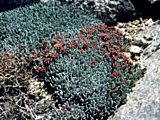
13 -
Eriogonum ovalifolium
(Polygonaceae) (Mt. Conness, 3750 m)
13 -
Eriogonum ovalifolium
(Polygonaceae) (Mt. Conness, 3750 m)

